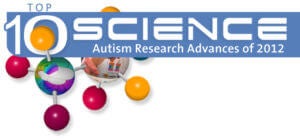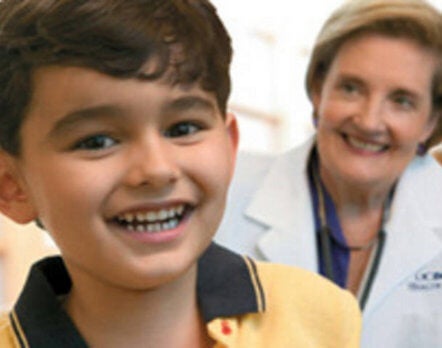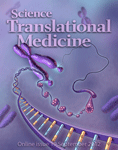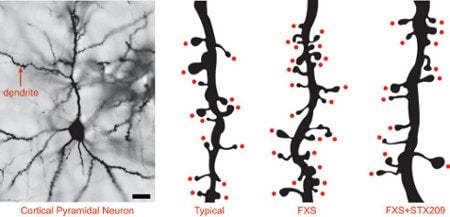 Autism Speaks, the world’s largest autism advocacy organization, recently released it’s Top Ten Autism Research Advances of 2012. Included in this list is Fragile X research, mainly two drug studies of Arbaclofen. This is a great recognition of the work being done for Fragile X treatments and of how that work may result in the advancement of autism research.
Autism Speaks, the world’s largest autism advocacy organization, recently released it’s Top Ten Autism Research Advances of 2012. Included in this list is Fragile X research, mainly two drug studies of Arbaclofen. This is a great recognition of the work being done for Fragile X treatments and of how that work may result in the advancement of autism research.
Arbaclofen Shows Promise for Treating Core Symptoms of Autism

Investigator Randi Hagerman, MD, and a patient with autism (photo courtesy of UC Regents)
Currently there are no medicines to treat autism’s core symptoms of impaired social and communication abilities and repetitive behaviors. This year, two studies – a clinical trial of patients with Fragile X syndrome and a mouse study – suggest that arbaclofen could become the first. Both appeared in the September issue of Science Translational Medicine.
 “Arbaclofen is the most important compound in clinical development in autism today,” said Robert Ring, Ph.D., Autism Speaks vice president of translational research. Moreover, arbaclofen derives from the already approved drug baclofen, used to treat muscle spasticity. This means that this class of drugs has already undergone considerable safety testing.
“Arbaclofen is the most important compound in clinical development in autism today,” said Robert Ring, Ph.D., Autism Speaks vice president of translational research. Moreover, arbaclofen derives from the already approved drug baclofen, used to treat muscle spasticity. This means that this class of drugs has already undergone considerable safety testing.
The study of individuals with Fragile X syndrome enrolled 63 children and adults. Many but not all had the additional diagnosis of autism. (Around one-third of individuals with Fragile X also have autism. Around 5 percent of those with autism have Fragile X syndrome.)
Researchers found a trend in improvements in several areas of social and behavior skills in their first analysis of this clinical trial. However, the trend fell short of significant improvement in most measures. Among the stand-out exceptions was social avoidance.
The investigators then narrowed their focus to look only at participants with severe social impairment. These were also the most likely to have ASD. This group’s response to treatment produced significant reductions in social avoidance and global improvement in problem behaviors and improvement in overall social functioning.
“What’s significant about this study is that the drug had an effect on a core symptom in Fragile X that is also a core symptom of autism,” said lead investigator Elizabeth Berry-Kravis, MD, PhD Dr. Berry-Kravis is a professor of biochemistry, neurological sciences and pediatrics at Rush University, in Chicago. “One would expect that the findings might translate from Fragile X to other causes of autism,” she said.
In the animal study, researchers used a mouse model of Fragile X syndrome. The mice lacked a working copy of the FMR1 gene. Silencing this gene causes Fragile X syndrome. Without it, brain cells lose the ability to respond correctly to a neurotransmitter called glutamate. This, in turn, causes the cells to overproduce certain proteins. As a result, malformations arise in the structures (dendritic spines) that connect brain cells. (See illustration below.)

Nerve cells in the brain have branching projections with specialized structures called dendritic spines (indicated by red dots) that receive information. These spines are longer, frailer and more abundant in the brains of Fragile X mice (center). Treatment with arbaclofen reduced the abnormalities (far right).
Following treatment with arbaclofen, the mice showed evidence of regulated protein production and corrected connectivity in and between their brain cells. In addition, treatment significantly reduced seizures and repetitive behaviors in the mice. Seizures are a symptom of Fragile X syndrome and are also associated with other severe types of autism. Repetitive behaviors are a core symptom of all types of autism.
“Because we correct the core pathophysiology in the mouse, we believe that this is a disease modifying treatment,” said Aileen Healy, Ph.D., the study’s lead author and vice president of research for Seaside Therapeutics, the Cambridge, Mass., biotech company developing arbaclofen.
“Together these studies offer important insights that are poised to transform the field of autism medicine development,” Dr. Ring said. “This establishes an important translational bridge between the proverbial bench and bedside by demonstrating that the same experimental agent can both produce clinically relevant effects in patients and reverse similar endpoints in an animal model of the same disease. With a bridge like this in place, a wave of additional scientific breakthroughs can begin to advance into clinical development.”
In November, Autism Speaks non-profit venture affiliate DELSIA (Delivering Scientific Innovation for Autism) announced a partnership with Seaside Therapeutics. Autism Speaks funding will help Seaside discover biomarkers that can help predict which patients are most likely to respond to arbaclofen and which may be at risk of possible side effects.
Henderson C, Wijetunge L, Kinoshita MN, et al. Reversal of Disease-Related Pathologies in the Fragile X Mouse Model by Selective Activation of GABAB Receptors with Arbaclofen. Sci Transl Med. 2012; 4(152): 152ra128.
Berry-Kravis EM, Hessl D, Rathmell B, et al. Effects of STX209 (Arbaclofen) on Neurobehavioral Function in Children and Adults with Fragile X Syndrome: A Randomized, Controlled, Phase 2 Trial. Sci Transl Med. 2012 19; 4(152): 152ra127.

